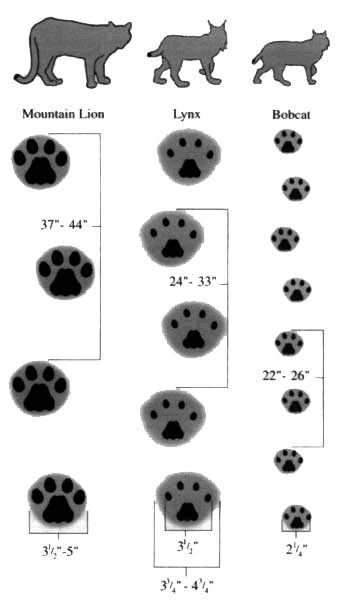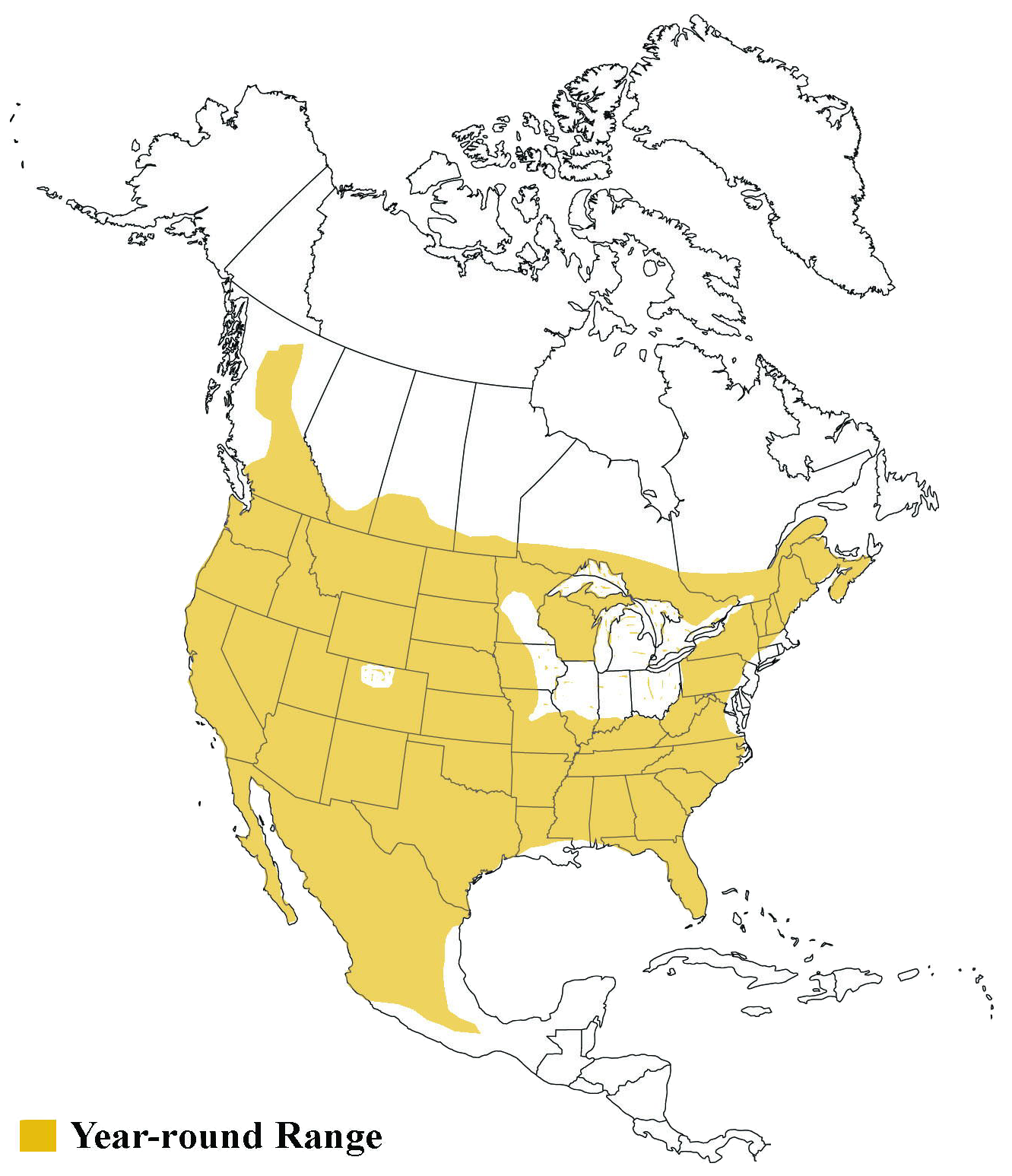Bobcat
Lynx rufus
Felid track comparisons. Image from CiscoLandTrust.org.
IDENTIFICATION
Length: Adult bobcats are 28 to 47 inches long.
Weight: Adult bobcats vary in weight from 20 to 30 pounds.
Color: Gray to brown coat with black-tufted ears, distinctive dark spots across body, and a black-tipped, stubby tail.
Sounds: Bobcats can hiss, snarl, growl, purr, and make crying noises that sound like a human baby.
HABITAT
Range: Bobcats can be found from southern Canada to northern Mexico, including most of the continental USA. Their habitat ranges widely, including dense forests, semidesert scrubland, urban edges, and more.
Diet: Bobcats prefer rabbits and hares, but will hunt a variety of prey including small rodents, birds, insects, and occasionally deer.
Status: Least Concern. The Minnesotan population includes about 2,000 individuals, making it the state’s most common wildcat. Bobcats are a designated game species in Minnesota, and are trapped and hunted for their fur.
LIFE CYCLE
Bobcats are territorial and largely solitary. They mark their territorial boundaries by leaving their scent via claw marks, urine, and/or feces. Bobcats are crepuscular, meaning they are generally most active at twilight and dawn. While they resemble the closely related Canada lynx, they are smaller, have abundant spots across their body, a longer tail, and shorter ear tufts.
Reproduction: Bobcats breed from winter into spring. Females have a gestation period lasting 8 to 10 weeks. They will choose one of their multiple den sites to give birth. These dens are often lined with moss and leaves. The female gives birth to between 1 and 6 kittens around late winter/early spring. Kittens are independent by 8 months old. The male has no involvement in rearing the young.
Bobcats are much more adaptable than the closely related lynx, allowing them to be more widespread across North America. They will travel from 2 to 7 miles across their territory every night.
Bobcat range. Image from the Young Forest Project (YoungForest.org).






